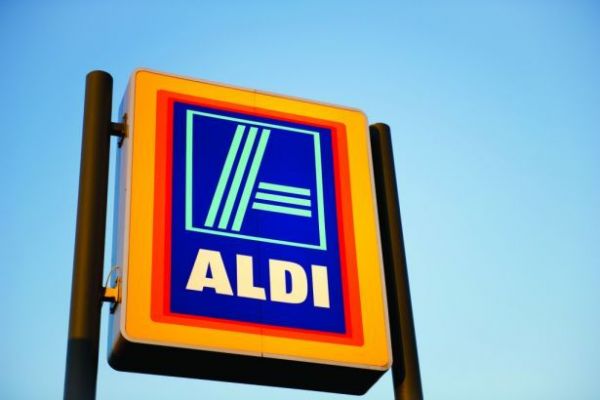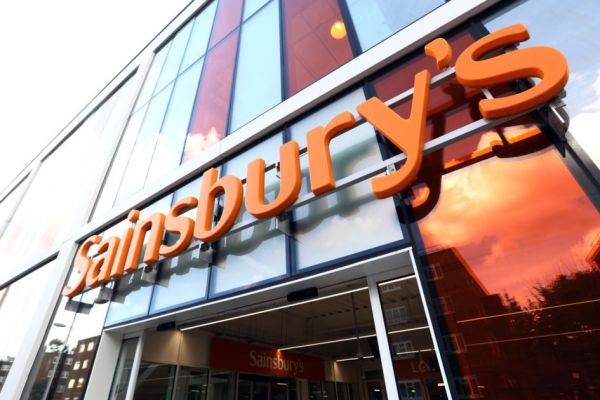In the Southern California town of Beaumont, Wal-Mart shoppers must first drive past the new Aldi, a recent addition to the family-owned German grocery-store chain that is beating the US retail giant at its own game: selling food at rock-bottom prices.
Aldi is betting that many in Beaumont will never make it to the Wal-Mart. Like hundreds of others Aldi has opened in recent years, the Beaumont store is strategically located to siphon off the retail giant’s discount-seeking shoppers with prices that can average almost 20 percent less than those at Wal-Mart Stores Inc.
Aldi stores lack the massive size and selection of a Wal-Mart – they tend to be around one-tenth the size of an average Wal-Mart and carry few national brands. Yet their rapid proliferation and the chain’s ability to offer even lower prices than Wal-Mart are putting pressure on the Bentonville, Arkansas-based discounter. And as Aldi expands aggressively in the US, it’s becoming just the latest in a long list of problems for Wal-Mart.
"It’s like a thousand cuts," said Leon Nicholas, a senior vice president at consulting firm Kantar Retail. "They are impacted by Aldi, by Amazon, by the dollar stores – and all these things add up for Wal-Mart."
Under Pressure
Wal-Mart, whose shares have declined 19 per cent over the past year, isn’t the only grocer under pressure by competition from Aldi and regional chains like Kroger. Great Atlantic & Pacific Tea Co., which operates under brands including A&P and Food Emporium, filed for bankruptcy last year, just three years after emerging from court protection. And Fairway Group Holdings Corp. may be on the brink of default this year as it struggles to expand in the New York market. Both are battling competition on the low end from discounters like Aldi and, on the high end, from retailers like Whole Foods.
Wal-Mart, with $298 billion in annual US revenue from its 3,500 superstores, is on far more solid financial footing. But with more than half of that revenue coming from grocery sales, it can scarcely afford to lose customers to Aldi, which is going after the same discount-minded lower-to-middle-income shoppers. Sales at US stores open more than a year rose just 0.6 per cent last quarter. The discounter is spending $1.5 billion on higher wages this year, raising minimum pay to $10 an hour. That, together with investments to improve its e-commerce offerings, could sharply crimp profits this year, the company has said.
Major Expansion
At the same time, Essen, Germany-based Aldi has quietly grown its US business to nearly $13 billion, according to Kantar data. A closely held company focused mainly on the East Coast and Midwest, Aldi doesn’t disclose its sales or profit. But Kantar forecasts that within five years the company’s annual sales will reach nearly $20 billion as total stores increase by about 33 per cent to 2,000, including a major expansion on the West Coast.
Wal-Mart executives say they have a plan to punch back. Chief Executive Officer Doug McMillon has been cutting costs over the past year, including eliminating jobs, closing underperforming stores and negotiating new contracts with suppliers. He’s also said he plans to lower prices further this year even as Wal-Mart improves the quality of its fresh foods and speeds checkout times. And it’s experimenting with shopper innovations such as expanding an online grocery service where customers can buy their food online and pick it up without leaving their cars.
Pasta Sauce
Wal-Mart’s ongoing challenge, though, is that its longtime marketing mantra of "everyday low price" is no longer resonating for shoppers going to Aldi in search of bargains. In a suburb of Detroit, Aldi’s in-house brand of pasta sauce was 50 per cent less than Wal-Mart’s store brand, its pancake syrup was 20 per cent less, and its black beans sold for 18 per cent of Wal-Mart’s. Some fresh foods also sold for less, with avocados and ground sirloin about half the price of Wal-Mart’s – though Wal-Mart had better prices on onions and chicken breasts. A pricing survey in July by Bloomberg Intelligence found Aldi items averaged about 19 per cent less than the comparable Wal-Mart items sold in the New Jersey area.
"The company has really given up its price leadership," said Scott Mushkin, a senior retail analyst with Wolfe Research. "We are a far cry from when Wal-Mart would have had a 15 per cent discount to the rest of the market."
Spartan Presentation
Aldi’s level of frugality can make Wal-Mart look downright extravagant. Its stores run on as few as three to five employees at one time, made possible because of its limited selection of items and spartan presentation. No opportunity for cost savings goes unnoticed. The chain eliminated the need to pay employees to fetch carts in the parking lot by making customers pay a 25-cent deposit per cart, refundable upon returning the cart inside the store. It also charges for bags and only recently started taking credit cards. And Aldi doesn’t focus on national brands, such as Oreos or Frosted Flakes. More than 90 per cent of its products are lower-cost versions of the household names.
"It has really chipped away at Wal-Mart’s everyday low price image," said Nicholas. "Wal-Mart is definitely concerned about Aldi."
News by Bloomberg, edited by ESM. To subscribe to ESM: The European Supermarket Magazine, click here.














